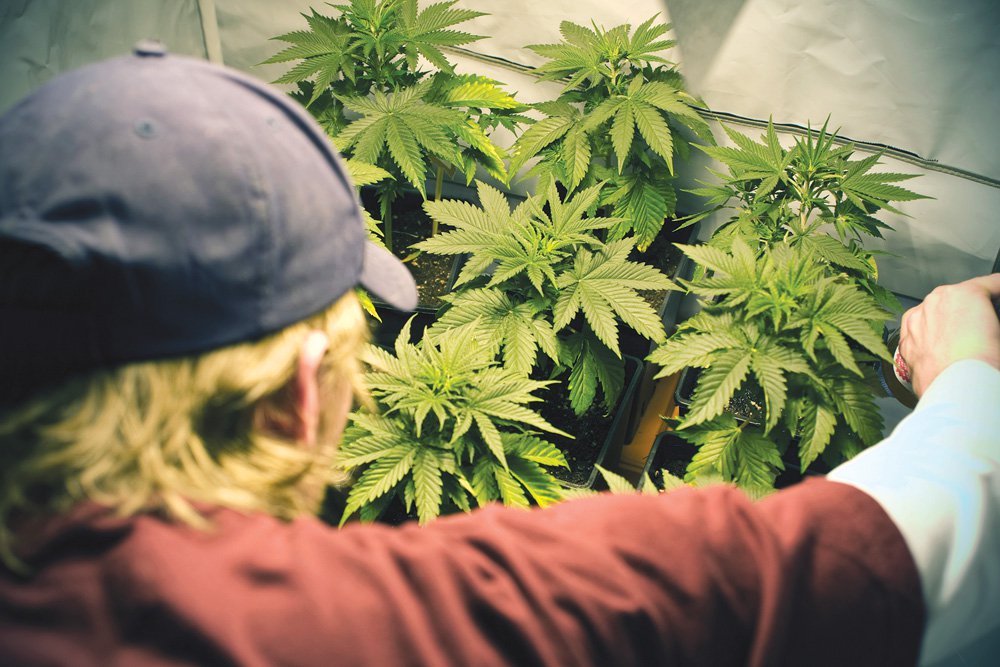You are here
Home 🌿 Marijuana Business News 🌿 New cannabis regulations a mixed blessing for small growers 🌿New cannabis regulations a mixed blessing for small growers

Craft cannabis growers have a lot to offer rural communities, but new Health Canada regulations may be a mixed blessing, experts say.
In May, Health Canada announced that those applying for licenses to grow cannabis must have a fully built site meeting all cannabis regulations. In the announcement, Health Canada cited the changes would address the wait time for licensing.
Why it matters: Developing an industry of small cannabis growers has the potential to create new economic opportunities for rural communities.
It said this requirement would weed out the 70 per cent of applicants who successfully passed the initial paper-based review of their application, but have never submitted their evidence package to show they’ve met building requirements.
At the end of April, there were no licensed craft, or micro, growers of cannabis in Manitoba and only one in Canada, according to Health Canada numbers, though 14 applicants for a micro-class license have received a ‘confirmation of readiness’ letter, which means that the department is satisfied that the application would meet the regulatory requirements based on an in-depth paper review.
David Hurford said the new rules show the government is “not really aware” of what it’s like to be a craft grower.
Hurford, the former national policy secretary for the Liberal Party of Canada, speaks on behalf of the B.C. Small Cannabis Producers and Processors.
“We were already starting at a low point,” Hurford said. Potential producers had many hoops to jump through, and capital was hard to come by. Now, he said, it will be worse.
“We think the government needs to go in the opposite direction,” said Hurford.
It’s been widely reported that Canada has a shortage of legal cannabis. Hurford said there are about 25,000 small farmers growing medical marijuana, and he would like to see 15 per cent of these transitioned to growing recreational cannabis.
“I think it’s all in our interest,” he said.
Hurford said each micro-grower could employ three or three-and-a-half employees per year. If 15 per cent of medical growers began growing recreational cannabis, this would create 2,000 direct jobs, mostly in rural areas.
He estimated that another thousand jobs would be created in processing, as well as increased demand for hardware and services like accounting.
Hurford said “no effort” has been made to transition medical growers to recreational cannabis.
On the other hand, Rob McIntyre said the new regulations don’t require growers to have their facilities fully built out. McIntyre, CEO of Salvation Botanicals, said while a micro-cultivation licence allows up to 200 square metres of total canopy space, growers can start much smaller and expand once they’ve been licensed.
The new regulations are a “step forward” for Health Canada, said McIntyre, adding this would eliminate applicants with no skin in the game and streamline the process for serious growers.
McIntyre suggested people step back, examine the regulations and plan how they can get into business with the smallest capital outlay. Then they can use their income to expand.
“Start small and grow tall,” said McIntyre.
He added that growers might consider cultivating their first crops outdoors and use that income to build facilities.
McIntyre said there’s already a thriving community of illegal cannabis growers. Done correctly, he says there’s a great opportunity for small operators to stake out a space in the cannabis industry.
“I definitely see a day when the Prairies are the largest producers of cannabis,” said McIntyre.
He suggested potential growers start with a small footprint, leave room to grow, get a good testing partner, find a place to get good advice, and ensure they’re compliant with Good Production Practices (GPP).
420 Intel is Your Source for Marijuana News
420 Intel Canada is your leading news source for the Canadian cannabis industry. Get the latest updates on Canadian cannabis stocks and developments on how Canada continues to be a major player in the worldwide recreational and medical cannabis industry.
420 Intel Canada is the Canadian Industry news outlet that will keep you updated on how these Canadian developments in recreational and medical marijuana will impact the country and the world. Our commitment is to bring you the most important cannabis news stories from across Canada every day of the week.
Marijuana industry news is a constant endeavor with new developments each day. For marijuana news across the True North, 420 Intel Canada promises to bring you quality, Canadian, cannabis industry news.
You can get 420 Intel news delivered directly to your inbox by signing up for our daily marijuana news, ensuring you’re always kept up to date on the ever-changing cannabis industry. To stay even better informed about marijuana legalization news follow us on Twitter, Facebook and LinkedIn.




